 Aaron Gold
.
June 03, 2019
.
Industry News
Aaron Gold
.
June 03, 2019
.
Industry News
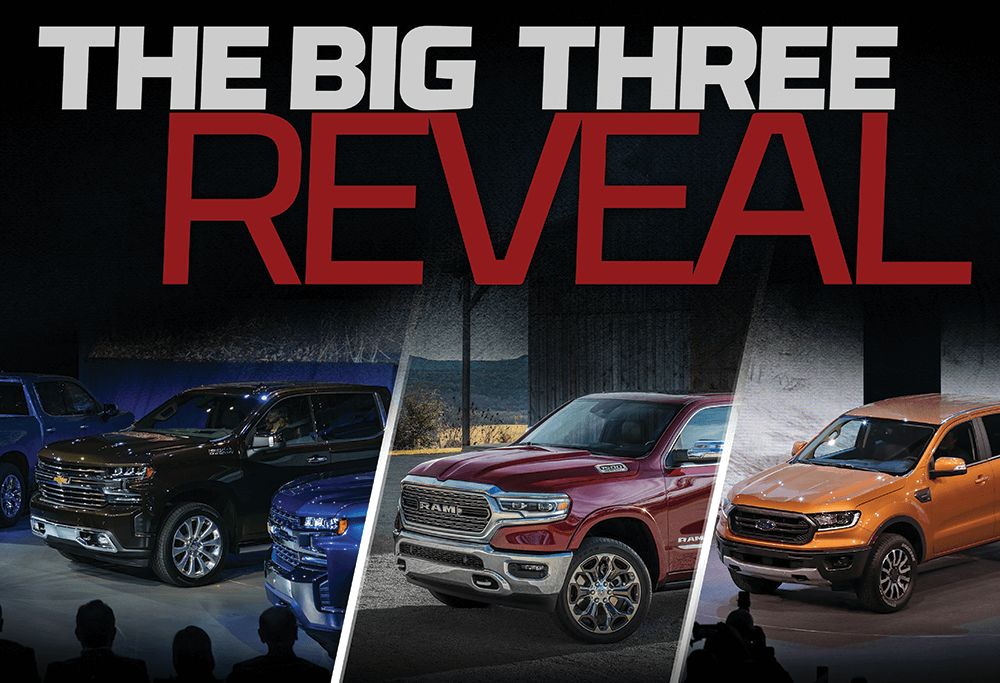
The 2018 North American International Auto Show (NAIAS) in Detroit was a big one for truck enthusiasts, with major reveals from Chevrolet, Ford and Ram. Let’s dive in and take a closer look at the new Silverado, Ranger and Ram 1500.
Chevrolet gave us a sneak peak at the 2019 Silverado in December when they helicoptered a bright red LT Trailboss to their Chevy Truck Centennial event at the Texas Motor Speedway. The Detroit show gave us our first look at the other models as well as details about the model and engine lineup.
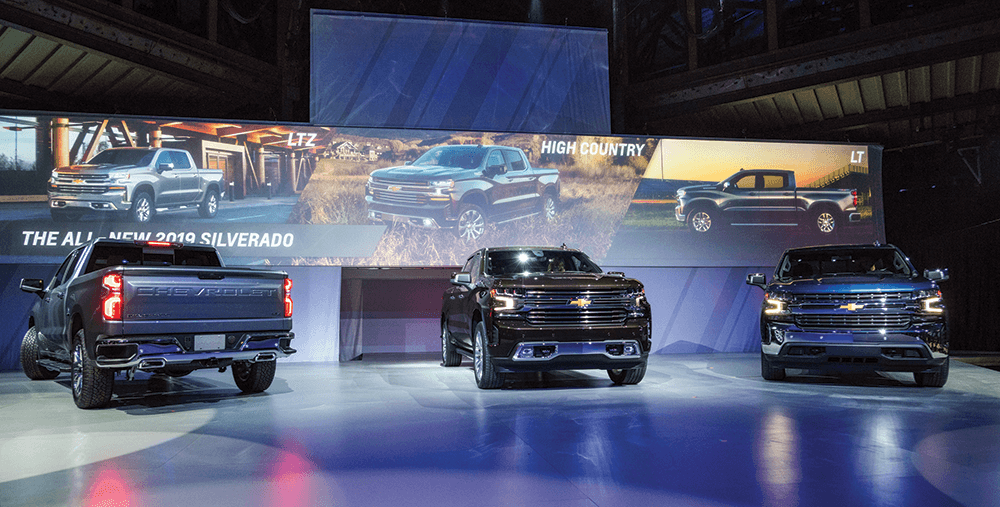
The first thing you need to know is that there are going to be a lot of Silverados. Following legendary GM President Alfred Sloan’s motto, “a car for every purse and purpose,” there will be no fewer than eight Silverado trim levels. On the low end, we’ll have the WT (Work Truck) and Custom models; on the high end, the LTZ and High Country; and volume models will include the LT and sport-themed RST. The line is rounded out by two off-road-ready Trailboss models: the Custom Trailboss and LT Trailboss.
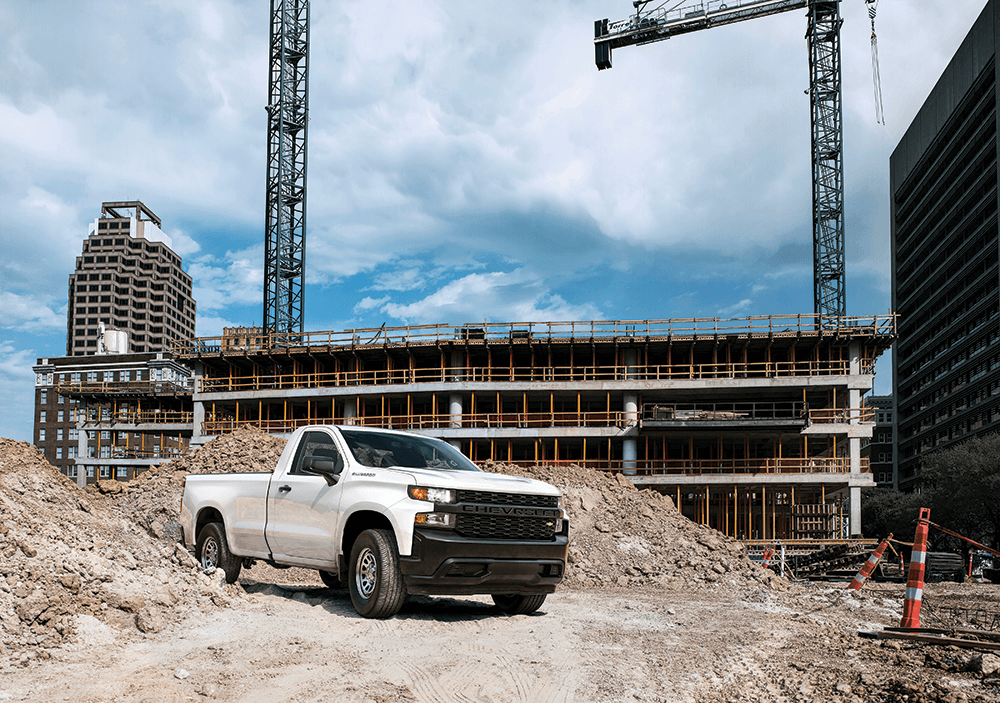
The 2019 Silverado is already drawing fire for its controversial exterior styling. Chevy designers wanted something that looked a lot like their initial sketches, and aside from the lack of a super-slammed roofline, the new Silverado does look quite a lot like a stylist’s sketch: The wheelbase is longer with the wheels pushed forward, the roofline is lower, and the stampings emphasize the height of the body and box. The emphasis on body-side creases takes some getting used to as well.
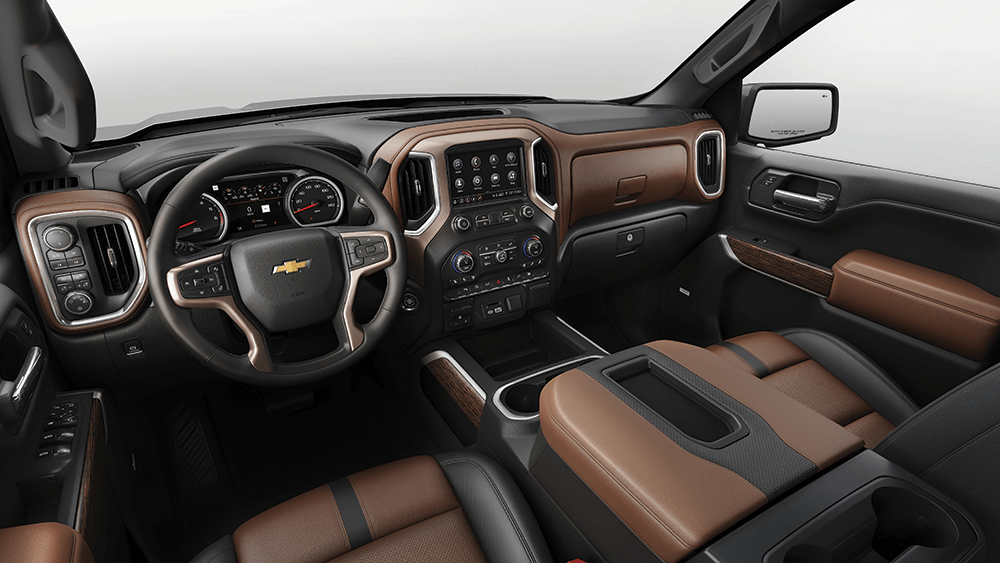
If one were feeling generous, one could say the Silverado’s styling is a daring move; then again, when you have a loyal base of buyers who would rather get weekly root canals than drive a Ford or a Ram, you do have a little flexibility to be controversial. With the collector market just starting to embrace the simple boxy lines of the 1973-87 square-body trucks, it’ll likely be a while before the classic-truck crowd embraces the new look.
If it’s any consolation, the first truck we saw was an LT Trailboss, which is probably the most jarring of the new Silverado models. Chevrolet will differentiate each of the trim levels by front-end styling, and the LT, LTZ, RST and High Country models are a bit more conservative—and perhaps a bit closer to the taste of Chevrolet pickup traditionalists.
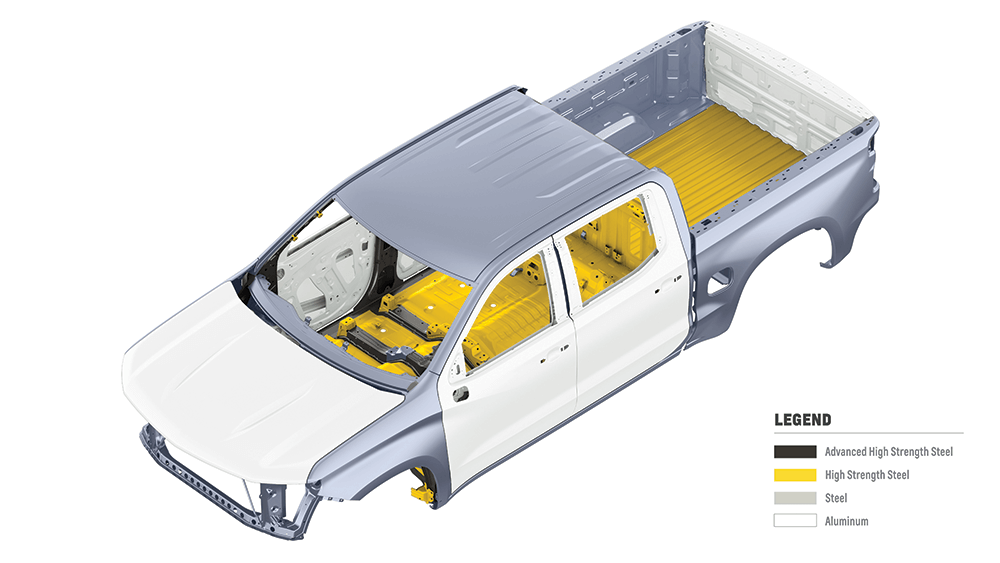
That said, even the traditionalists won’t be able to complain about the interior, which is largely identical to the outgoing truck. Though the trim is different, the layout—light switches, vent, instrument panel, vent, stereo-over-HVAC, vent, double-glovebox, vent—is identical to the current truck. GM says this is a response to owners who love the current interior layout, and we are among them; the ergonomics and MyLink entertainment system in the current truck are pretty darn good, and there’s no reason to change them. We only wish the same conservative approach had been taken with the exterior.
One aspect we found of interest was the mix of aluminum and steel. Ford made a much-publicized switch to aluminum for its F series pickup bodies and beds, something Chevrolet has been capitalizing on in its ads, and the 2019 Silverado indicates no let up. All of the swinging panels (doors, tailgate, hood) on the new Silverado will be made of aluminum in order to save weight, which will be reduced by 450 pounds in some configurations. However, the cab cage structure and bed (which has been strengthened and reshaped to provide more usable cargo space) will be made of steel. In one of the most memorable lines of the show, Mark Reuss, GM’s executive vice president of global product development, said that a truck’s bed is like the head of a hammer, in that it does all the work and takes all the abuse. He then added, “I don’t think you’d get much work done with an aluminum hammer.”
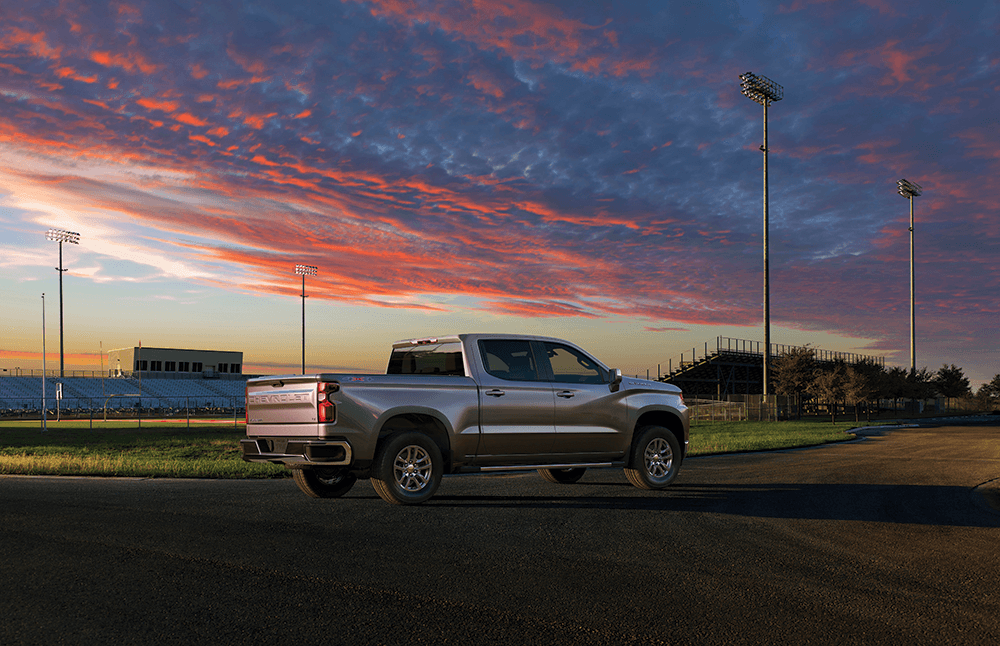
Chevy did not give details on the powertrains, but they did say that both the 5.3- and 6.2-liter V-8s would be extensively revised, including a cylinder deactivation system that can shut down between one and seven cylinders depending on engine load. An inline six-cylinder diesel is in the works, and both the 6.2 and diesel will be offered with a variant of the recently introduced 10-speed automatic transmission.
It’s no secret that Ford has been planning a return to the small-truck market (though the automakers prefer the term “mid-size” for this class). Ford stopped selling the Ranger in the U.S. after the 2012 model year, though an international version, largely designed by Ford of Australia, has been sold in other markets right up to the present. With strong growth in the segment, fueled by the introduction of GM’s mid-size pickups and an updated Toyota Tacoma, Ford has finally decided to bring the Ranger back to the U.S. and Canada.
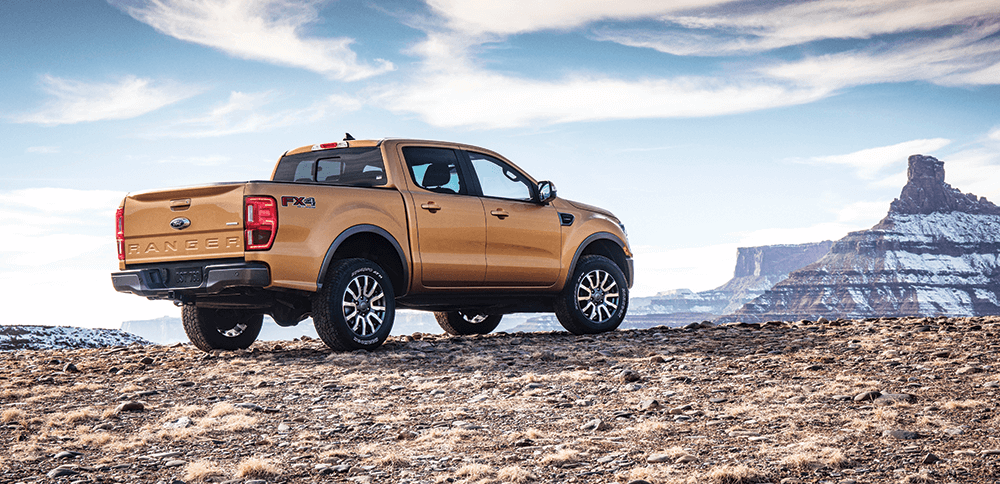
The new-to-America Ranger is, indeed, based on the international truck, though it has been heavily modified for domestic sale in order to meet both U.S. safety standards and American (and Canadian) buyers’ expectations. Ford says the Ranger was developed following many of the same rigorous procedures used for the F-150 and Super Duty. While Ford was not ready to release hard numbers, it said the Ranger will be “competitive” for towing capacity and that it is targeting a best-in-class payload figure.
Modifications to the Ranger include a stronger, fully boxed frame with six cross members, steel frame-mounted bumpers and updated styling. Though the U.S.-spec Ranger bears a resemblance to the international truck, the separate steel bumper and double-bulged hood give it a distinct look, and it does indeed remind us of a baby F-150.
Ford had not released dimensions of the U.S.-spec Ranger at the time we went to press, but the European version is roughly 1-2 inches below the short-wheelbase Chevrolet Colorado in length, width and height. Ford plans to offer the Ranger in a single wheelbase with a choice of extended (SuperCab) or crew (SuperCrew) cabs, with the box length varying with the cab size. It will not offer an extended-wheelbase model as General Motors does with the Chevy Colorado and GMC Canyon.
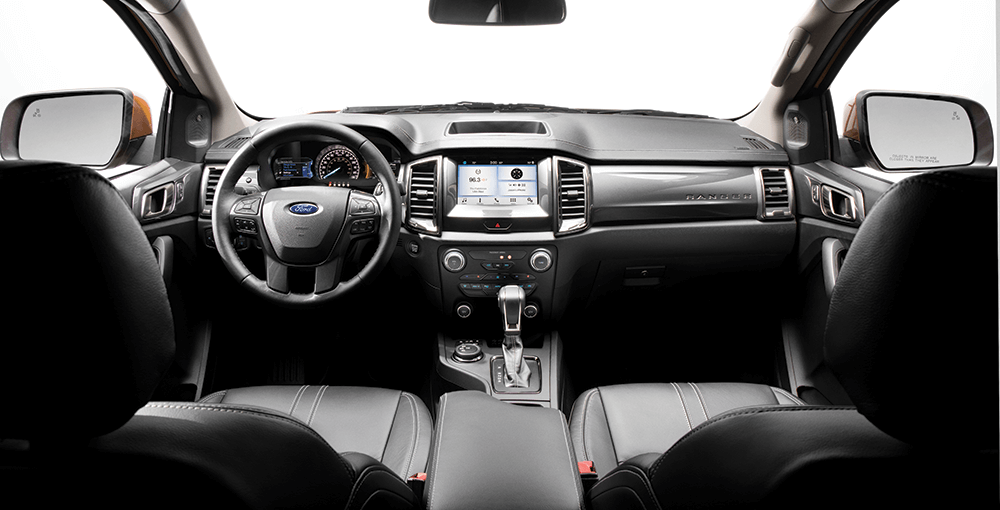
The Ranger will come to market with a single powertrain offering made up of the 2.3-liter turbocharged EcoBoost four-cylinder engine and a 10-speed SelectShift automatic transmission that uses much of the same internal hardware as the F-150’s 10-speed. Again, final power numbers were not available at the auto show, but the 2.3 develops between 280 and 310 hp and 310 to 320 lb-ft of torque in other Ford vehicles, and has been pushed as high as 350 hp and 350 lb-ft in the Ford Focus RS. Clearly, there’s a lot of potential in this turbo four.
As you would expect, the Ranger will be offered with both rear- and four-wheel-drive, the latter with a two-speed shift-on-the-fly transfer case. An electronic locking rear differential will be standard in FX4 off-road models and optional in other four-wheel-drive Rangers.
New for the four-wheel-drive Ranger (and Ford) is Trail Control, a system that will maintain a set speed over off-road obstacles both uphill and down. The system is similar to Toyota’s Crawl Control, but while the Toyota system only works at walking-pace speeds, Ford’s system can be set for speeds up to 20 mph.
Ford will offer the Ranger in XL, XLT and Lariat trim levels, with the FX4 off-road package available for all three models. An on-sale date has not been announced, but Ford plans to begin production of the 2019 Ranger at its Michigan Assembly Plant late in 2018, which means we may see trucks in dealerships before January 2019.
In the past, Chrysler was known for its superior engineering and the Ram 1500 seems like the truck that can bring that reputation back. Though the new Ram looks somewhat similar to the old one on the outside, it’s the changes under the skin—and inside the cabin—that are really remarkable.
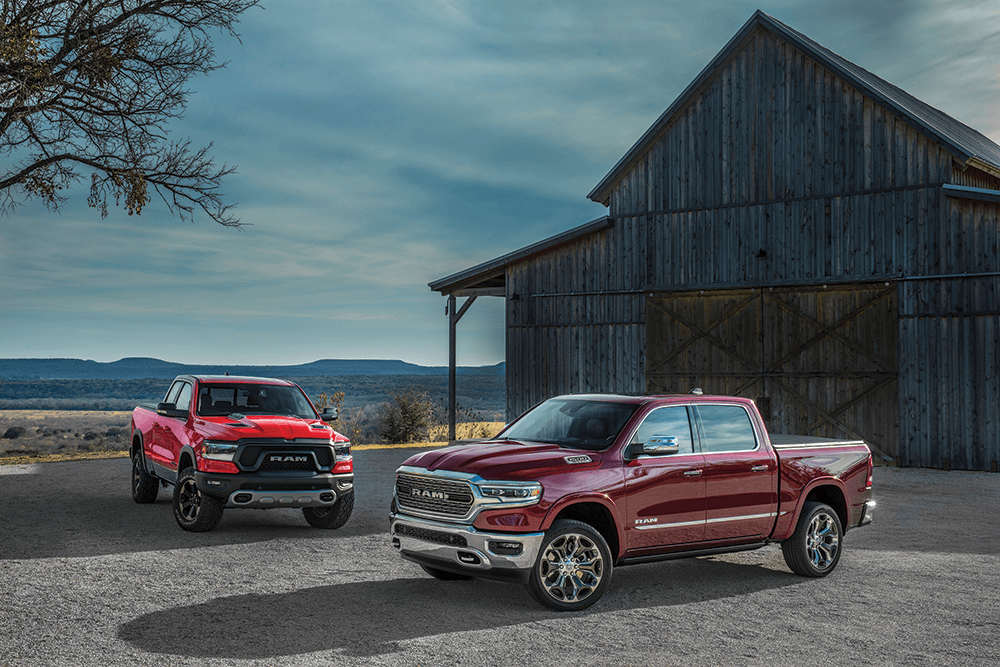
As with the new Silverado, reducing weight was a high priority for the Ram 1500’s engineers. A new frame, made up of 98% high-strength steel, is both stronger and 100 pounds lighter than the old frame, contributing more than half of the up-to-225-pound weight reduction in the new Ram 1500. Capacities are up as well. When properly equipped, the Ram 1500 can carry up to 2,300 pounds and tow up to 12,750 pounds.
The Ram 1500 will offer the same 3.6-liter Pentastar V-6 and 5.7-liter Hemi V-8 engines (the EcoDiesel will not be offered at launch, but should return eventually), but the big news is the addition of eTorque, a 48-volt “mild hybrid” system with a motor-generator that replaces the regular alternator. It charges a small suitcase-sized battery pack when the Ram 1500 accelerates, and helps to power the truck under acceleration or high-demand loads. The system also allows the air conditioning to run when the engine auto-stops at red lights. It’s standard with the V-6 engine and on most variants of the V-8, though lower-trim V-8-powered trucks can be ordered without it. Output for the V-6 is 305 hp and 269 lb-ft of torque, while the V-8 delivers 395 hp and 410 lb-ft of torque. The eTorque system adds up to 90 lb-ft of torque to the V-6 and 130 lb-ft to the V-8.
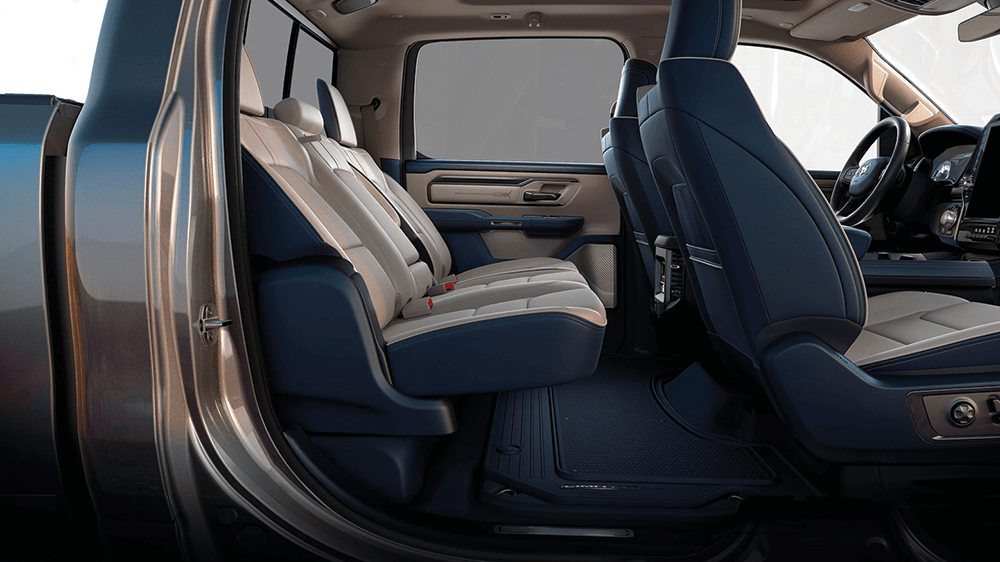
Another big change is the interior, particularly on high-trim trucks, which get a 12-inch screen for the Uconnect infotainment system. The screen is mounted vertically, as in a Tesla, which allows better map viewing and permits split-screen operation. Lesser trims get an 8.4-inch screen, and both units are compatible with Apple CarPlay and Android Auto. Combined with improvements to trim and interior materials, this makes the Ram 1500’s interior a real stunner, and calls into question Chevrolet’s decision to give us more of the same old same old.
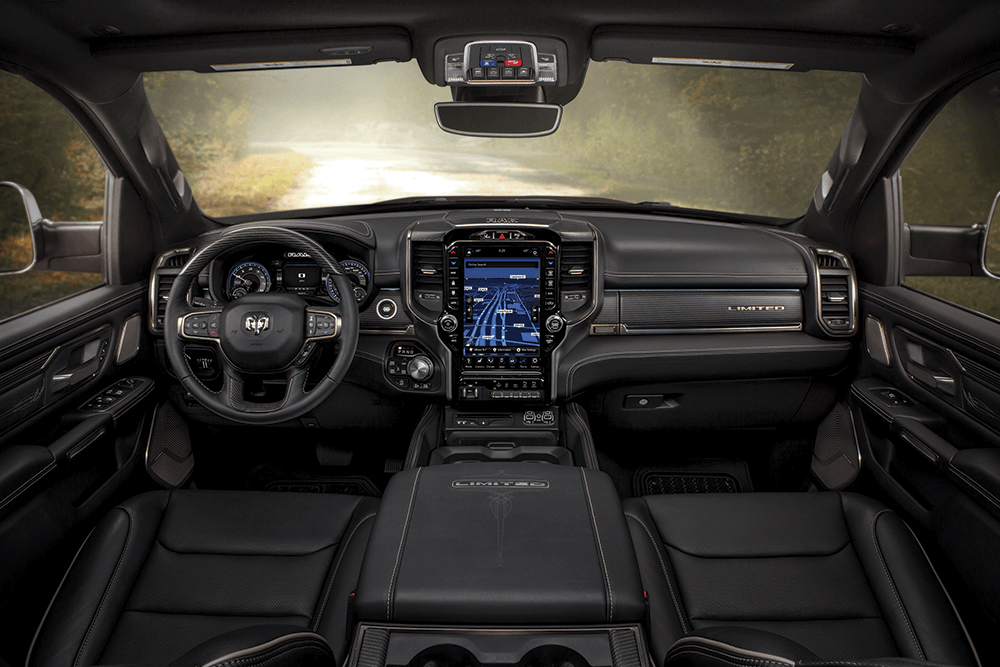
Along with the new features are a few old favorites, including the class-exclusive four-corner air suspension, which returns as an option for 2019 with better tuning. The air springs are now paired with frequency response damper (FRD) shocks, which provide quicker response, allowing the suspension to be tuned for a more comfortable ride with no loss in handling ability.
We’ve talked about what’s going on under the sheet metal, so what about the sheet metal itself? Aerodynamics was a high-priority item in the Ram 1500’s restyling, and with the addition of a deployable air dam and a grille shutter system—plus the ability of the optional air suspension to lower the truck’s ride height at highway speeds—the Ram 1500 boasts a 9% improvement in aerodynamics.
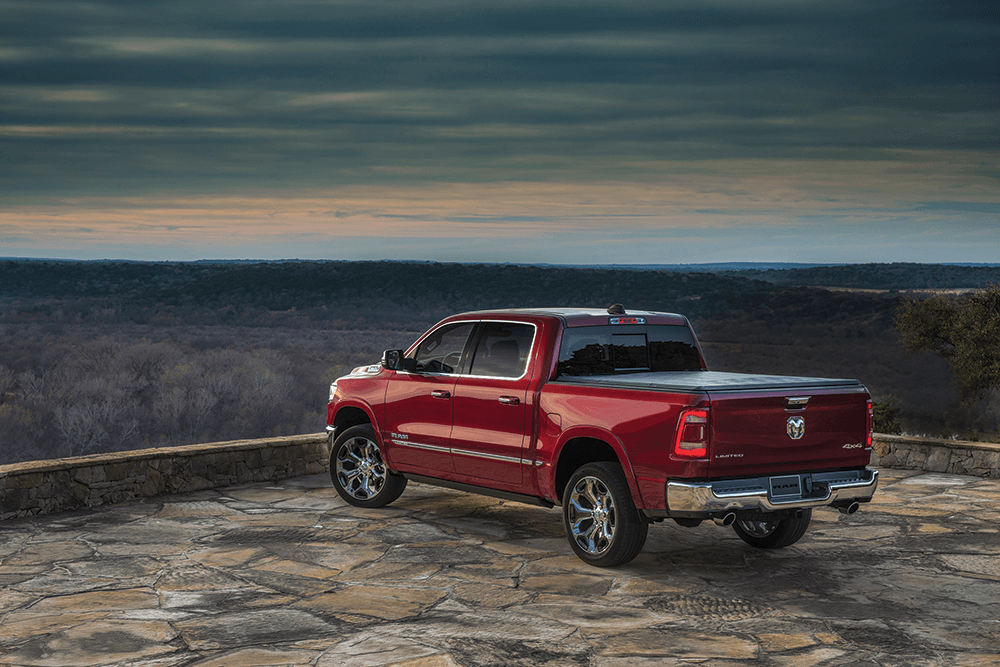
That means the nose of the truck loses some of its low-fender Peterbuilt look, a change most pronounced on the chrome-grilled Limited model, which strikes us a bit like a cross between a Chevrolet Silverado and a Dodge Charger. Trucks with black and body-color grilles bear a closer resemblance to the aggressive Ram face we’ve come to know and love.
Ram won’t quite match the Silverado’s offering of eight trim levels, but it comes close with six: Tradesman, Big Horn, Rebel, Laramie, Longhorn and Limited. Available nice-to-haves include a tailgate that can be opened from the key fob, up to three 115-volt outlets, five USB sockets and wireless phone-charging capability.
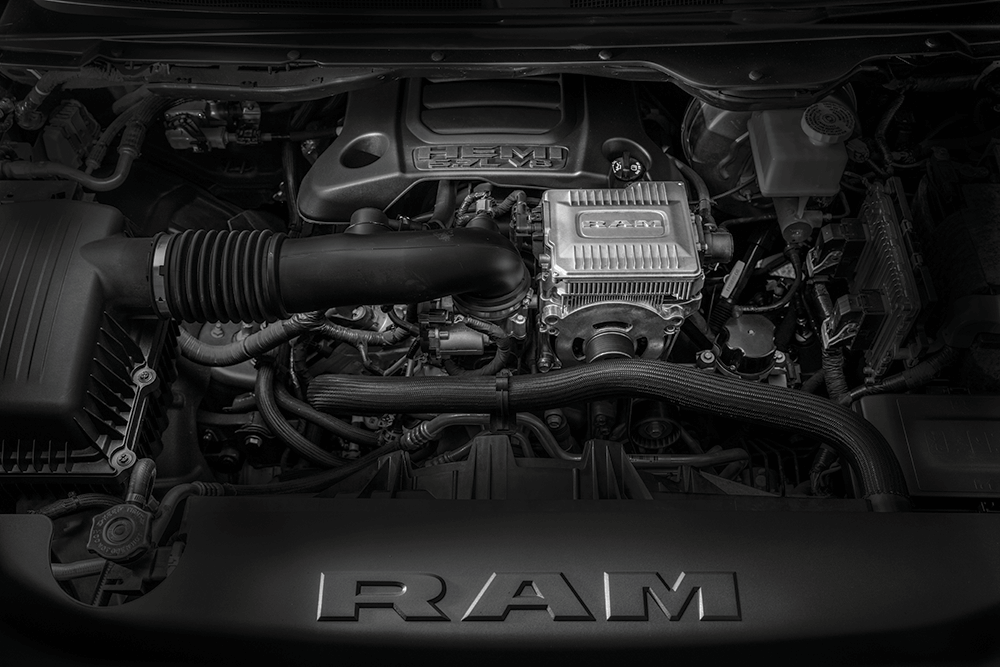
With so many pickup buyers loyal to either Chevrolet or Ford, Chrysler really has to stand out to attract buyers. That worked with the Cummins diesel in the Ram HD trucks, and we think it has a chance of working now with all of the features packed into the 2019 Ram 1500. The new version goes on sale early in 2018.
Share Link